Here's a small example with 2x2 bars which will be growing and changing color randomly, one at a time when update_bars() is called:
import matplotlib.pyplot as plt
import mpl_toolkits.mplot3d.axes3d as p3
import matplotlib.animation as animation
import random
def update_bars(num, bars):
i = random.randint(0, 3)
dz[i] += 0.1
bars[i] = ax.bar3d(xpos[i], ypos[i], zpos[i], dx[i], dy[i], dz[i], color=random.choice(['r', 'g', 'b']))
return bars
fig = plt.figure()
ax = p3.Axes3D(fig)
xpos = [1, 1, 3, 3]
ypos = [1, 3, 1, 3]
zpos = [0, 0, 0, 0]
dx = [1, 1, 1, 1]
dy = [1, 1, 1, 1]
dz = [3, 2, 6, 5]
# add bars
bars = []
for i in range(4):
bars.append(ax.bar3d(xpos[i], ypos[i], zpos[i], dx[i], dy[i], dz[i], color=random.choice(['r', 'g', 'b'])))
ax.set_title('3D bars')
line_ani = animation.FuncAnimation(fig, update_bars, 20, fargs=[bars], interval=100, blit=False)
plt.show()
Output (not animated here):


bars[i].remove()before ``bars[i] = ax.bar3d(xpos[i], ..."it works in eitherdz[i] -= 0.1ordz[i] += 0.1. – user3644627 Jul 26 '18 at 12:20dz[i] += random.choice([-0.1, 0.1])in place ofdz[i] += 0.1for a better test. – user3644627 Jul 26 '18 at 12:36